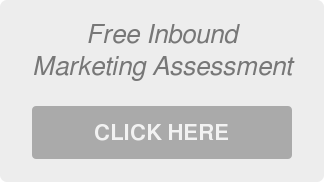 Effective appointment setting campaigns can be the backbone of a thriving business, bridging the gap between prospective customers and sales. But with the complexity of managing outreach, tracking responses, and securing commitments, many businesses struggle to turn their campaigns into sustainable success. If you’ve been wondering how to optimize your appointment-setting process, here are 5 steps to help you create a winning appointment setting campaign.
Effective appointment setting campaigns can be the backbone of a thriving business, bridging the gap between prospective customers and sales. But with the complexity of managing outreach, tracking responses, and securing commitments, many businesses struggle to turn their campaigns into sustainable success. If you’ve been wondering how to optimize your appointment-setting process, here are 5 steps to help you create a winning appointment setting campaign.
1. Clearly Define Your Target Audience
Your campaign will only succeed if you're reaching the right prospects. A broad, untargeted approach wastes both time and resources. Follow these actionable steps to identify your audience accurately:
- Analyze Customer Data: Look for patterns among your existing customers. What industries, roles, or challenges do they represent?
- Use Segmentation Tools: Break down your audience into specific categories based on demographics, behaviors, and preferences.
Use tools like LinkedIn Sales Navigator to identify decision-makers. If you offer software solutions, targeting IT directors or CIOs would be more effective than sending mass emails to generic company inboxes.
2. Build A Compelling Outreach Strategy
Once you’ve identified your audience, it’s time to craft a strategy that captures attention and compels prospects to respond.
- Scripted, Personalized Messages: Generic templates don't work. Personalize your message by using the recipient's name, referencing their role, or mentioning a relevant topic like their company’s growth.
- Multi-Channel Outreach: Don’t rely solely on cold calls. Combine email, social media connections, and even SMS reminders for a well-rounded approach.
Example Outreach Email:
Hi [First Name],
I came across your profile and noticed your company has been making waves in [specific industry niche]. At [Your Company Name], we specialize in [specific solution]. I’d love the opportunity to discuss how we’ve helped businesses like yours achieve [specific benefit].
Are you free to chat next week? Here’s a link to my calendar to make scheduling seamless: [Insert Scheduling Link].
Looking forward to connecting!
Best,
[Your Name]
3. Perfect The Timing
Timing isn’t just about sending a message at 10 a.m. sharp. It involves understanding where your prospects are in their decision-making cycle and approaching them at the right phase.
- Peak Response Hours: Studies show the best outreach times are mid-morning (9-11 a.m.) or early afternoon (1-3 p.m.). Test these time slots to identify the best for your audience.
- Personalized Pipelines: Keep track of warm leads versus cold ones. Warm leads, especially referrals, deserve immediate attention before they cool off.
4. Train Your Appointment Setters
Your campaign is only as strong as the people running it. Train your appointment setters in both technical tools and communication skills.
- How to handle objections with confidence.
- How to explain your product or service succinctly.
- Tactics for building rapport quickly during calls.
Role-playing sessions and ongoing feedback loops can turn good appointment setters into great ones.
5. Follow up with Consistency
Accounts go cold not because a prospect isn’t interested but because they’ve been forgotten. A structured follow-up process ensures you stay top-of-mind.
- Use friendly, non-pushy reminders. For instance, "Just checking in to see if the time we discussed still works for you."
- Space follow-ups appropriately (e.g., 2 days after the first message, 5 days after the second, etc.).
- Track all interactions with a CRM system to avoid redundant or repetitive messages.
Measuring Success In Appointment Setting Campaigns
Creating a great campaign isn’t the finish line. You need to evaluate ROI to identify what’s working and what needs fine-tuning.
Metrics to Track:
- Response Rate: The number of prospects who replied to your outreach.
- Conversion Rate: The percentage of appointments that successfully converted into sales or opportunities.
- No-Show Rate: How many scheduled prospects actually attend their meetings.
If your no-show rate is high, consider sending reminder notifications 24 hours before the appointment.
Appointment setting acts as the first impression many prospects have of your business. A professional and personalized approach can be the factor that sets you apart from competitors. No matter your industry, perfecting your appointment setting campaigns ensures that you’re building relationships with the right people at the right time for the right reasons.





